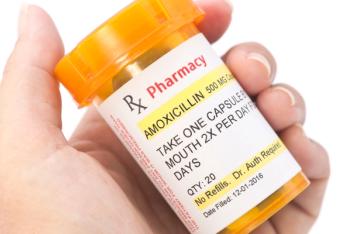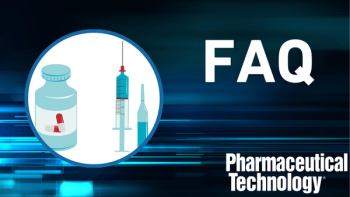
Pharmaceutical Technology Europe
- Pharmaceutical Technology Europe-01-01-2009
- Volume 21
- Issue 1
Application-related properties of a new fast dispersible excipient
A new excipient for orally disintegrating tablets not only imparts superior tablet characteristics, but has the added advantage of allowing users to maintain full control over their formulations, manufacturing processes and intellectual property.
The pharmaceutical industry continues to witness a surge in the number of fast disintegrating drug delivery forms.1 Orally disintegrating tablets (ODTs) are solid dosage formulations containing an API that rapidly disintegrate or disperse within a few seconds when placed on the tongue, without the need for external liquid to facilitate swallowing.2 Since their inception in the early 1980s, the number of technologies aimed at achieving this form of drug delivery has increased, and now includes direct compression, freezedrying or lyophilization, spray drying, sublimation and wet granulation methods.
Ross Anania/Getty Images
The primary advantage of fast disintegrating oral dosage forms is the possibility to combine the convenience of a tablet with the ease of swallowing of a liquid. This makes ODTs particularly suitable for groups of people with difficulties in swallowing, such as children, the elderly, patients with behavioural disorders and those who may have the tendency to 'cheek' their medication (i.e., retain the tablet within their cheek pocket), as well as conditions such as migraine and allergy attacks that require immediate onset of action.3 They may also be used where local action in the oral cavity is required (e.g., breath freshner formulatd as an orally disintegrating tablet) or for reasons of hepatic metabolism.
One of the largest advantages of ODTs is life cycle management, as they provide not only a means to replenish depleting product pipelines, but also a means to diversify traditional drug delivery forms. ODTs may also be useful in the veterinary industry as administering traditional tablets to animals can usually be very difficult.
An ideal ODT
The European Pharmacopoeia recommends disintegration time for an orodispersible tablet to be within 3 min.4 Most manufacturers, however, aim for less than 30 s, following draft guidelines from FDA.2
With first generation ODTs, great emphasis was placed on the speed of tablet disintegration. Consequently, many first generation ODTs exhibit tablet disintegrations of only a few seconds. However, the mechanical strength of these tablets is low, necessitating the need for special manufacturing and packaging equipment. New generation oral disintegrating tablets show significant improvement in tablet mechanical robustness, making it easier to have higher drug loading. There are however, very few formulations that have successfully combined acceptable tablet mechanical strength, fast disintegration, a good mouth feel and ease of production.
The need to retain formulation independence from the technology owner is an attractive option for pharmaceutical companies as this increases profitability by eliminating the need to pay royalty fees to the technology owner.
Direct compression is one of the most cost-effective methods for producing tablets. This applies also to orally dispersible/disintegrating tablet formulations as it involves the simple step of adding the active ingredient and a lubricant to the ODT excipient and compressing the mixture.
Figure 1
In the design and formulation of ODTs, parameters such as hydrophilicity and water uptake of the excipient, outer and inner surface area of the tablet, tablet porosity, compression force and mechanical strength must all be taken into account to ensure rapid disintegration and sufficient hardness for tablet stability.5 Taste and a good mouth feel are also of critical importance. According to market research on consumer preferences, 70% of the respondents indicated they would choose an ODT version of a medication rather than its corresponding conventional tablet or liquid form,6 demonstrating that taste plays a decisive role in consumer preference of an ODT.6
Ludiflash (BASF SE, Germany) is a new excipient for use in ODT formulations. It comprises a combination of Dmannitol, crospovidone and 30% aqueous polyvinyl acetate dispersion, and is suitable for use in both direct compression and wet granulation techniques. Concentrations of up to 50% API can be incorporated in a formulation without compromising the smooth mouth feel characteristic of Ludiflash. The use of a low particle size crospovidone grade as the disintegrant ensures the absence of an aftertaste of grittiness, which is common to many ODT formulations.
Application-related characteristics
Ludiflash consists of granulated agglomerated particles between 170-210 µm (D4,3). The sorption isotherm is very similar to that of mannitol (Figure 2), and reveals a product with very low water uptake capacity, even at 80% relative humidity. Therefore, ODTs containing Ludiflash can be packaged with standard packing, such as polyethylene containers and pushthrough blisters.7,8
Figure 2
Tablet porosity is important in determining the disintegration speed of an oral disintegrating tablet. With Ludiflash, compression forces of 3–6 kN for a 10 mm tablet are usually adequate for the production of tablets with sufficient hardness and acceptable disintegration time. Figures 2 and 3 show formulations using the model drugs Loperamide and Acetaminophen with Ludiflash. The uniformity of mass of the tablets obtained remained well within Pharmacopeia limits, despite varying the tabletting speed.
Where even faster disintegration time is required, BASF SE's Kollidon CLSF, the disintegrant component of Ludiflash, can be added as an external disintegrant to the formulation in concentrations of 1–5%. This results not only in a faster disintegration, but also in an increased tablet mechanical strength because of the binding property of Kollidon CLSF.5
Figure 3
Influence of lubricant and manufacturing equipment
Different types of lubricants can be used with Ludiflash. For this article, data have been restricted to the two most commonly used tabletting lubricants — magnesium stearate (Bärlocher, Germany) and sodium stearyl fumarate (JRS, Germany). The tablet properties obtained showed that where the more hydrophilic sodium stearyl fumarate was used, the tablets had a shorter disintegration time at all compression forces when compared with the tablet compression using the more lipophilic magnesium stearate.4,9
Figure 4
Sodium stearyl fumarate improves the wettability of the tablet ingredients, resulting in shorter tablet disintegration times. The hardness and friability of the tablets for sodium stearyl fumarate and magnesium stearate, however, were almost identical (Figure 4). Both lubricants were equally effective as can be seen from the very low ejection forces obtained at different compression forces (Figure 5).4
Figure 5
Impact of tabletting machine
The porosity of ODT tablets influences their disintegration speed. Tabletting machines with a precompression step would decrease tablet porosity, consequently increasing both tablet hardness and disintegration time.
Results obtained showed that compressing the tablets on a Korsch XL 100 press (Korsch AG, Germany) (with a precompression step) yielded tablets with higher hardness values and, consequently, longer disintegration times when compared with the hardness and disintegration times of tablets compressed on the Korsch PH 106 (without a precompression step).
Conclusions
ODT formulations are becoming increasingly important as both patients and pharmaceutical companies choose this drug delivery instead of traditional tablet or liquid dosage forms.10
The new generation ODTs show improvements regarding tablet mechanical strength, as well as the concentration of API that can be incorporated.
Ludiflash, even when used in ODT formulations with a highdrug dose, still retains its characteristic creamy consistency — the absence of a gritty/sandy residue on the tongue after taking an ODT is crucial if a patient will choose one ODT formulation compared with another. The fact that developers can also maintain full control of their formulations, manufacturing processes and intellectual property makes this new excipient a profitable option for the pharmaceutical industry.
Acknowledgments
The author would like to thank Thorsten Cech, Thorsten Agnese, Kathrin MeyerBoehm, Angelika Mashke, S. Kruse and S. Gebert, all from BASF SE, for their experimental contributions to the data presented in this article.
Maureen Mistry is a Technical Service Manager at BASF Pharma Ingredients and Services Europe (Germany)
References
1. K.Kolter et al., Controlled Release Society 34th Annual Meeting and Exposition (Long beach, California, USA, July 2007).
2. FDA Guidance for Industry — Orally Disintegrating Tablets draft guidance, April 2007.
3. K. Cremer, Orally disintegrating dosage forms (2001).
4. European Pharmacopoeia Supplement 6.3.
5. K.Kolter et al., AAPS (San Diego, CA, USA, November 2007).
6. D. Brown, Drug Delivery Technology, 3(6) (2003).
7. R. Widmaier, "Technologies for orally disintegrating tablets: A short introduction" (BASF, Ludwigshafen, 2007).
8. BASF SE, Technical information on Ludiflash (2008).
9. K.Kolter et al., APV world meeting (Barcelona, Spain, April 2008).
10. T. Harmon, Orally disintegrating Tablets: A Valuable life cycle management strategy (Pharmaceutical Commerce, March 2000).
Articles in this issue
almost 17 years ago
The four colours of biotechnologyyalmost 17 years ago
Promoting a peaceful workplacealmost 17 years ago
New beginningsalmost 17 years ago
The packaging connectionalmost 17 years ago
Organizational polygamyalmost 17 years ago
The tough road for US pharmaalmost 17 years ago
Hot-melt extrusion: an emerging drug delivery technologyalmost 17 years ago
Sustainability in green pharmaceutical productionalmost 17 years ago
Happy 2009!Newsletter
Get the essential updates shaping the future of pharma manufacturing and compliance—subscribe today to Pharmaceutical Technology and never miss a breakthrough.





